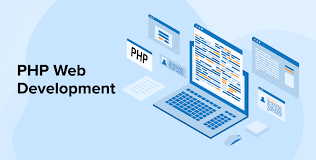NetSuite helps organizations increase productivity, lower expenses and accelerate growth. The platform combines financials, CRM, inventory, ecommerce and HR on a unified cloud platform. This consolidated view empowers data-driven decisions at each point of the customer lifecycle.
However, with hundreds of built-in features, enablement teams appropriately activate components generating the highest impact for each line of business. This overview outlines the top 10 capabilities transforming operational efficiency when precisely configured.
#1 Customizable Reporting and Dashboards
Centralized analytics is pivotal for rapidly detecting trends and influencing outcomes. NetSuite allows modelling reports and key performance indicators tailored to each management level or role. Scheduling delivery via emails or directly in the web interface promotes insights consumption. Users drill down into figures to perform root cause analysis on mobile or desktop. Custom metrics bring clarity to success drivers across sales, service, fulfilment, accounting, inventory and more.
#2 Real-Time Inventory Visibility and Optimization
Order accuracy and profitability depend profoundly on inventory integrity. NetSuite overlays projected and on-hand stock levels from all distribution points onto order orchestration workflows. Rules engine recommendations heighten decisions using historical data like seasonality, lead times and demand patterns. Serialized inventory, batch tracking and bin management features optimize cycle counting and warehousing. The system dynamically alerts supply chain partners to replenishments and transfers avoiding backorders or write-downs.
#3 Configurable Order Processing and Invoicing
Preconfigured order processing, invoicing and payment capture procedures accelerate period-end financial closings. Triggers seamlessly create invoices from sales orders or service records while accommodating complex revenue schedules. Automated dunning and tier-based collections workflows reduce outstanding account receivable balances. Tools support volume licensing agreements common in software and manufacturing verticals including subscription and maintenance billing.
#4 Customer Center and Web Portals
Branded web portals present a unified experience boosting customer satisfaction alongside self-service. Shoppers access account information like order status, tracking, invoices, payments and saved catalogs from any device. Submitting support tickets via customer center lowers service request phone volume allowing faster resolution tracking. Self-updating password reset tools reduce IT calls and system access friction. Customers conveniently schedule or modify appointments, enable automatic reminders and submit surveys capturing actionable feedback.
#5 Customer Relationship Management
Entrenched CRM elements fuel sales productivity and maximize lifetime value. Features like pipeline visibility, workflow-driven nurturing campaigns and conditional rules-based alerts keep the funnel moving. Activity tracking encourages team selling while capturing deal context from every touchpoint. Robust segmentation, lead scoring models and integrated marketing metrics amplify conversions long term through targeted promotions.
#6 Financial Management Tools
Centralizing financial data from any geography or subsidiary accelerates period closings. Automated intercompany transactions and consolidations reduce errors. Advanced revenue recognition support adheres to strict accounting standards for booking and timing. Shared payment services enable applying cash efficiently across business units. Custom financial reporting definitions affirm consistency when generating annual statements or filings.
#7 Payroll and HR Management
Optimize payroll spending through integrated payroll processing covering compensation, benefits, reimbursements and reporting compliance. Model various pay cycles, tax calculations, eligible deductions and entitlement policies locally. Automate complex commission payment splitting based on documented plan rules. Integrating subsidiary platforms collates global people analytics identifying retention and training priorities centrally.
#8 Procurement and Expense Reporting
Procurement workflow efficiencies reduce supply chain costs enterprise-wide. Ensure budget integrity by managing spend requests and purchase approvals online. Automate routing based on vendor, product type and cost center ownership criteria. Attach POs directly from negotiated pricing catalog terms. Match receipts, invoices and payables while dynamically reminding approvers via workflows. Allocate expenses and item receipts to projects also creating general ledger entries.
#9 Manufacturing Support
Combining manufacturing with financials and inventory optimizes production control. Standard costing, routing procedures, lot handling and dynamic co&co-product allocation precisely determine profitability per item. Capacity planning tools balance workloads across internal and outsourced facilities. Engineering change controls secure bill of material integrity as specifications change. Material resource planning automatically computes recommended stock reorder amounts meeting demand.
#10 Multi-Subsidiary Management Tools
NetSuite embeds global financial best practices out of the box. Predefined country-specific reporting, multi-language/currency support and consolidation eliminate manual cross-border workarounds. Customize tax rules and financial reporting outputs for over 100 nations as compliance needs dictate. Click to drill from region-specific statements down to granular transaction line items. Calculate gain/loss accurately when transferring costs or selling across currency-converted subsidiaries.
Configuring the optimal capabilities to support, growth requires industry know-how and platform expertise. SuiteRep certified solution consultants assist throughout your NetSuite journey – from planning through activation, integration and ongoing improvement. Learn how SuiteRep helps enterprises extract maximum value from NetSuite’s extensive features.




